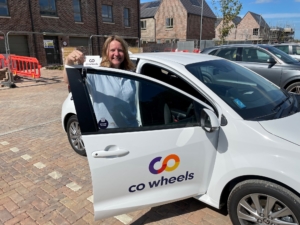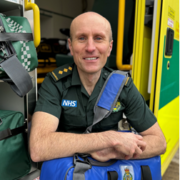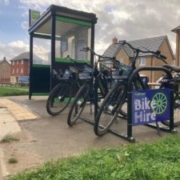Swindon Borough Council’s Travel Plans Supplementary Planning Document

We caught up with Claire Fleming, Travel Plan Officer at Swindon Borough Council to reflect on Swindon’s Supplementary Planning Document (SPD) four year on.
It’s been just over four years since the adoption Swindon Borough Council’s Travel Plans Supplementary Planning Document (SPD). The SPD arose from a frustration that travel plans secured by planning condition through the planning process were unlikely to be successful, since developers want to build their houses, or sell off their warehouses, and move on to the next project without being encumbered for several years.
Our SPD proposed that developers could pay a contribution through S106 agreement and Swindon Borough Council would take responsibility for implementing the travel plan. There is an alternative option, should the developer want to undertake the travel plan themselves, which sees us take a bond as assurity that the travel plan will be implemented as proposed.
Reflecting on our learnings over those four years, what has worked and what would we do differently in hindsight?
Residential developers are happy to pay the contribution.
The scheme has been warmly welcomed by residential developers. We had no negative feedback from developers during the consultation phase of the SPD, and not a single development has yet pushed back. We kept the contribution cost low (£288 per household, index linked to the publication date of the SPD) and easy to understand (the cost is the same regardless of size of dwelling and scale of the development).
Our decision making around this was down to the resources on offer being “per household”. We give each household a welcome pack, bus and rail taster tickets, the ability to borrow a bike, attendance at events. The cost difference between offering these things to a one-bedroomed flat and a five-bedroomed detached property are negligible. There would probably be economies of scale associated with larger sites, but as these major developments build out, resources have to be revised, and maps amended, so often they feel like several smaller sites when broken down into their parcels.
Employment developers prefer to retain the delivery of the travel plan.
It has been noticeable that the developments involving warehouses have (nearly) all chosen to deposit a bond, pay the monitoring fee and retain control of the travel plan themselves.
We think this is due to the uncertainty of the end occupier(s). At the time of going through the outline planning process, many of the units are speculative, and perhaps the developers feel safer retaining the responsibility with a consultant.
Developers are motivated by the Modeshift STARS accreditation scheme.
When a developer pays the S106 contribution for the council to implement the travel plan, we aim to achieve a Modeshift STARS “good travel plan” level of accreditation within a few months of occupation, and either retain this throughout the life of the travel plan, or achieve the “very good travel plan” level within a year or two on the larger sites.
Our intention was initially for our benefit, to know that we were delivering to a respectable national standard, but we had underestimated the reaction of developers once the framed certificate hit the sales office! There was competition between the development sites as to which would gain the next level first, which was good motivation for us as a delivery team.
Land use classes
We overlooked the “Sui Generis” land use class in the SPD, both in terms of the trigger point for a travel plan, and the contribution cost. This is causing us some head scratching now, in trying to be fair and consistent. When we come to review the SPD, we will spend more time on the land use classes.
Monitoring
We often chat to other authorities about our approach, and sometimes I’m asked whether it’s like we’re ‘marking our own homework’ when delivering a travel plan to satisfy the planning obligation that we set as a planning authority.
As the approach is set out in the SPD, developers should know what to expect from us, and we submit an annual progress report to the developer and LPA as though we were consultants. Transparency is key, and we publish plans and reports online for the residents to see once signed off. There is also the Modeshift accreditation, as discussed earlier.
We have had some difficulties with resident travel surveys in terms of getting a good response rate. We offer an incentive in the form of £100 shopping voucher prize draw, we advertise the survey via individual invites to the residents through their door, we keep the surveys short and simple, but still we can have response rates that are below our recommended thresholds. We can mitigate this by undertaking traffic counts or door to door surveying, but this is more costly.
Monitoring is closely linked to targets, and we realised early on that “mode” targets are not the key goal. Doing everything we promised to do is more important, and if we’ve done it well, we should make some progress with modal shift. However, so much of enabling people to make sustainable transport choices is out of our hands that it seems unfair to punish the travel plan’s efforts. Success is dependent on facilities being built ahead of the housing parcels, bus routes materialising and providing a good, frequent, reliable service, active travel corridors being in place early that are safe and attractive to use, and go where people need them to go… I could go on.
6 – Benefits wider than the site
The SPD has enabled financial contributions that allow us to put schemes in place that benefit Swindon people beyond the immediate site. These have been referred to as “shadow benefits”. Examples include a car club car at one development that is available for the surrounding community to use – there are 5000 additional households within a ten minute walk of the car. The Swindon Cycle Map and Liftshare online site is paid for by contributions and available to all. When planning an event for the development, we often ‘piggy back’ a local fete or fun day in the community, and give the residents from the development a special invite, but make the offer (usually a bike mechanic, guided walk, bike marking, roadshow etc) available to all.
All in all, I feel the residential part of the SPD is working extremely well. It’s helping to integrate new communities into the local area by offering these shadow benefits to create community cohesion.
The employment side of the SPD is taking longer to embed. Maybe it will in another 4 years!












Leave a Reply
Want to join the discussion?Feel free to contribute!